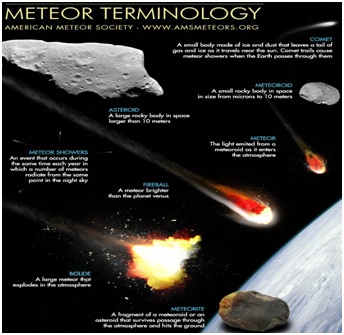

Context
The Perseid meteor shower, which is an annual celestial event, is expected to reach its peak.
What are Meteor Showers?
- Meteors are pieces of rock and ice released by comets as they orbit their orbits around the sun.
- When meteors fall toward Earth, the resistance causes the space to vibrate and, as meteorites pass through space, leave behind gases of bright gas visible to observers and not to the rock itself.
- Meteor showers, on the other hand, are proven when the Earth passes through the debris left by a comet or asteroid.
- When a meteor arrives on Earth, it is called a meteorite and a series of meteorites, when they come together at the same time, is called a meteor shower.
- According to NASA, there are more than 30 rainstorms that occur each year and are visible on Earth.

About
About Perseid meteor shower
- The Perseidsare prolific types of meteor shower which are associated with the comet Swift-Tuttle.
- The meteors are called Perseids as the point from which they appear to hail lies in the constellation Perseus.
- The Perseid meteor shower will be visible in the northern hemisphere and down to mid-southern latitudes.
- These Meteors are caused due to the tiny, sand grain- to pea-size bits of dusty debris that strikes the top of Earth's atmosphere roughly 130 km up.
- The debris has deposited the tail of the comet Swift-Tuttle.
- Every year, Earth passes through this region of the “river of rubble” around July 17 and continues till August 24.
- Faint Perseids appear as tiny, quick streaks.
- They sail across the sky for several seconds and leave a brief train of glowing smoke.
- Perseids deliver more bright meteors than any other annual meteor shower.
- The stream of debris is called the Perseid cloud that stretches along the orbit of the comet.
- The cloud consists of particles ejected by the comet as it travels on its 133-year orbit.

